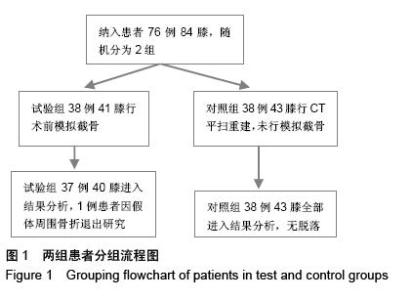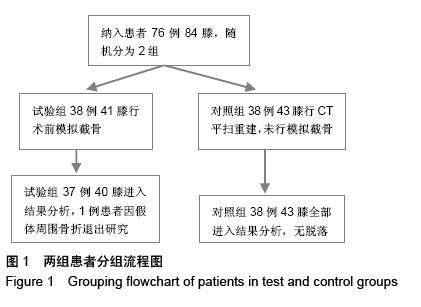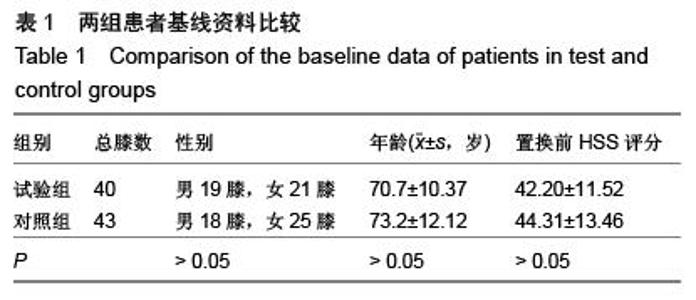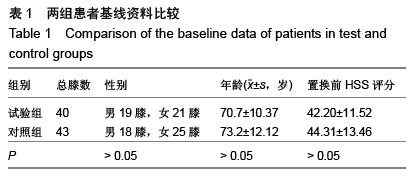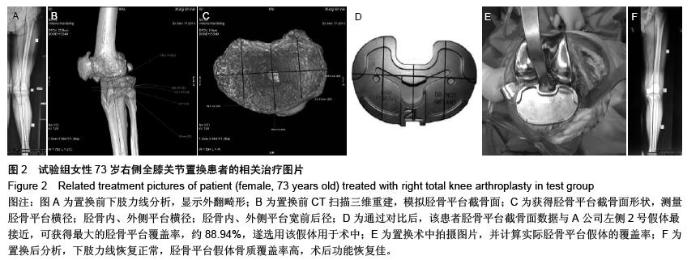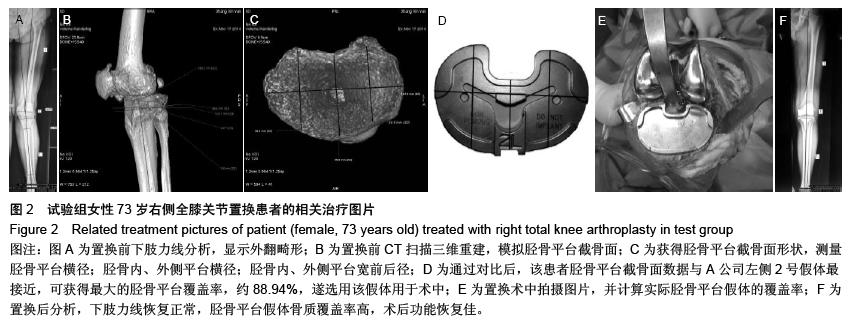| [1] Rawal J, Devany AJ, Jeffery JA, et al. Arthroplasty in the Valgus Knee: Comparison and Discussion of Lateral vs Medial Parapatellar Approaches and Implant Selection. Open Orthop J. 2015;9: 94-97.
[2] Clary C, Aram L, Deffenbaugh D. Tibial base design and patient morphology affecting tibialcoverage and rotational alignment after total knee arthroplasty. Knee Surg Sports Traumatol Arthrosc. 2014;22(12):3012-3018.
[3] Marra MA, Vanheule V, Fluit R, et al. A subject-specific musculoskeletal modeling framework to predict in vivo mechanics of total knee arthroplasty. J Biomech Eng. 2015; 137(2): 020904.
[4] Godest AC, Beaugonin M, Haug E, et al. Simulation of a knee joint replacement during a gait cycle using explicit finite element analysis. J Biomech. 2002;35:267-275.
[5] Dai Y, Scuderi GR, Bischoff JE. Anatomic tibial component design can increase tibialcoverage and rotational alignment accuracy: a comparison of six contemporary designs.Knee Surg Sports Traumatol Arthrosc. 2014;22(12):2911-2923.
[6] Cherian JJ, O'Connor MI, Robinson K, et al. A Prospective, Longitudinal Study of Outcomes Following Total Knee Arthroplasty Stratified by Gender. J Arthroplasty. 2015;30(8): 1372-1377.
[7] Costa AJ, Lustig S, Scholes CJ. Can tibialcoverage in total kneereplacement be reliably evaluated with three-dimensional image-based digital templating? Bone Joint Res. 2013;2(1):1-8
[8] Huang EH, Copp SN, Bugbee WD. Accuracy of A Handheld Accelerometer-Based Navigation System for Femoral and Tibial Resection in Total Knee Arthroplasty. J Arthroplasty. 2015.
[9] Pietsch M, Djahani O, Hochegger M, et al. Patient-specific total knee arthroplasty: the importance of planning by the surgeon. Knee Surg Sports Traumatol Arthrosc. 2013;21(10): 2220-2226.
[10] Sadoghi P. Current concepts in total knee arthroplasty: Patient specific instrumentation. World J Orthop. 2015;6(6): 446-48.
[11] 中华人民共和国国务院.医疗机构管理条例.1994.09.01.
[12] Ardestani MM, Moazen M, Jin Z. Contribution of geometric design parameters to knee implant performance: Conflicting impact of conformity on kinematics and contact mechanics. Knee. 2015;22(3): 217-224.
[13] Fitzpatrick CK, Clary CW, Cyr AJ, et al. Mechanics of post-cam engagement during simulated dynamic activity. J Orthop Res. 2013;31(9): 1438-1446.
[14] Maas A, Kim TK, Miehlke RK, et al. Differences in anatomy and kinematics in Asian and Caucasian TKA patients: influence on implant positioning and subsequent loading conditions in mobile bearing knees. Biomed Res Int. 2014;2014: 612838.
[15] Goyal N, Patel AR, Yaffe MA, et al. Does Implant Design Influence the Accuracy of Patient Specific Instrumentation in Total Knee Arthroplasty? J Arthroplasty. 2015.
[16] Hamilton DF, Burnett R, Patton JT, et al. Implant design influences patient outcome after total knee arthroplasty: a prospective double-blind randomised controlled trial. Bone Joint J. 2015;97-B(1): 64-70.
[17] 张博,潘江,曲铁兵,等.国人正常胫骨近端线性参数测量及特性分析[J].医用生物力学,2007,22(4): 351-355.
[18] Wernecke GC, Harris IA, Houang MT. Comparison of tibial bone coverage of 6 knee prostheses: a magnetic resonance imaging study with controlled rotation. J Orthop Surg (Hong Kong). 2012;20(2):143-147.
[19] Canale ST. Campbell's Operative Orthopaedics. Tenthed. vol. Philadelphia, Mosby, 2003:292-295.
[20] Stronach BM, Pelt CE, Erickson J, et al. Patient-specific total knee arthroplasty required frequent surgeon-directed changes. Clin Orthop Relat Res. 2013;471(1):169-174.
[21] Mensch JS, Amstutz HC. Knee morphology as a guide to knee replacement. Clin Orthop. 1975;2: 231-241.
[22] Cheng CK, Lung CY, Lee YM, et al. A new approach of designing thetibial baseplate of total knee prosthesis. Clin Biomech. 1999;2:112-117.
[23] Westrich GH, Haas SB, Insall JN, et al. Resection specimenanalysis of proximal tibial anatomy based on 100 total knee arthroplastyspecimens. J Arthroplasty. 1995;(10): 47-51.
[24] Ward WG,Johnston KS,Dorey FJ, et al. Extramedullary porouscoating to prevent diaphyseal osteolysis and radiolucent linesaround proximal tibial replacements. J Bone Joint Surg Am. 1993;7: 976-987.
[25] Labuda A,Papaioannou A,Pritchard J,et al. Prevalence of osteoporosis in osteoarthritic patients undergoing total hip or total knee arthroplasty. Arch Phys Med Rehabil. 2008; 12: 2373-2374.
[26] Mutsuzaki H, Ikeda K. Simple method for confirming tibial osteotomy during total knee arthroplasty. Sports Med Arthrosc Rehabil Ther Technol. 2012;4(1): 44.
[27] Bindelglass DF,Cohen JL,Dorr LD. Current principles of design for cementedand cementless knees. Tech Orthop. 1991;6:80.
[28] Gao F, Guo W, Sun W. Correlation between the coverage percentage of prosthesis and postoperative hidden blood loss in primary total knee arthroplasty. Chin Med J (Engl). 2014; 127(12):2265-2269.
[29] Hsu AR, Gross CE, Bhatia S, et al. Template-directed instrumentation in total knee arthroplasty: cost savings analysis. Orthopedics. 2012;35(11):e1596-1600.
[30] Yang B, Song CH, Yu JK,et al. Intraoperative anthropometric measurements of tibial morphology: comparisons with the dimensions of current tibial implants. Knee Surg Sports Traumatol Arthrosc. 2014;22(12): 2924-2930. |
